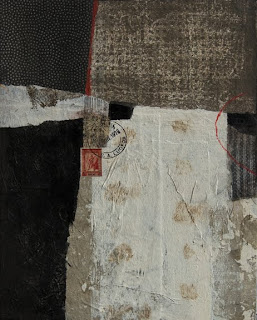
detail of handmade scrolls
Zen has one aim: to encourage us to take a longer and closer look at all that is around us in the hope that once we have developed a more intense insight we will grow to cherish and nurture this earth and all its inhabitants. Every day events take on new meaning.

water basin with koi near my real koi pond
When we practice Zen we embark on a journey of self discovery... a journey that leads to a deeper understanding not only of our minds but also of our concept of reality.

dry water basin with bamboo charcoal (for purity)
Zen and the empty mind: a mind that is awake but fixed nowhere... empty your thinking of the past and the future and be IN THE MOMENT.

Old Japanese books, the covers are worn and torn.
No matter what medium you choose -- photography, haiku, poetry, dance, music, painting, collage, assemblage, acting -- you will, by virtue of being in the moment, improve the quality of your art. You will be able to see more, to feel more, and to be more.

Container with sumi brushes and bamboo charcoal
Zen wants us to pay full attention to the smallest details in life-- to be mindful of everything we do. Zen is about enjoying the simple things.

Large flat round pottery with a LOT of small round beach rocks
With its strong belief in self expression, Zen is by its very nature a catalyst for creative thought. Its spiritual freedom allows us to discover our creative powers and hidden potential.

hand made scrolls, part of a larger assemblage
"I am part of the sun as my eye is part of me. That I am part of the earth my feet know perfectly, and my blood is part of the sea. There is not any part of me that is alone and absolute except my mind, and we shall find that the mind has no existence by itself, it is only the glitter of the sun on the surfaces of the water." --- D. H. Lawrence

small stone doll's head on rock
What really matters is that Zen deals with the present. It teaches us that life is too precious to waste. Zen is about the joy of living right now-- to live for each moment.

Drink your tea slowly and reverently,
as if the axis
on which the earth revolves --
slowly, evenly, without
rushing toward the future.
Live the actual moment.
Only this moment is life.
--Thich Nhat Hanh
as if the axis
on which the earth revolves --
slowly, evenly, without
rushing toward the future.
Live the actual moment.
Only this moment is life.
--Thich Nhat Hanh
























